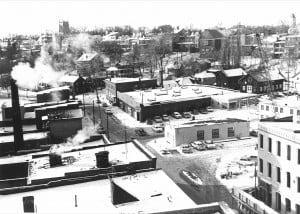Explaining the 1960s
By John Marks, Curator of Collections and Exhibitions
Each year before college begins, Beloit College in Wisconsin puts out “The Mindset List” for the incoming freshman class. Originally compiled as a lark, it’s become a valuable tool for professors (and other adults) to understand an 18-year old’s perspective.
Entries range from ridiculous to more profound. For example, the college Class of 2019 has never licked a postage stamp. Hybrid automobiles have always been mass produced. Hong Kong has always been under Chinese rule. Google has always been a noun and a verb, email is considered a formal communication, and freshmen have always expected Wi-Fi to be available wherever they go.
 I teach a public history class at Hobart & William Smith Colleges. Each year I assign a research project tied to the historical society’s fundraiser of the following winter, which will be based around the 1960s. I assumed the students had preconceptions of hippies and casual drug use for the entire decade, so I asked what came to mind when I said “the 1960s.” The first person to reply said, “Flappers?”
I teach a public history class at Hobart & William Smith Colleges. Each year I assign a research project tied to the historical society’s fundraiser of the following winter, which will be based around the 1960s. I assumed the students had preconceptions of hippies and casual drug use for the entire decade, so I asked what came to mind when I said “the 1960s.” The first person to reply said, “Flappers?”
Let’s pause before we rush for the smelling salts and decry education in America. The parents of today’s college students are probably between their late 40s and late 50s, a little older if their child is the last one out of the nest. Parental stories of the 1960s will be about elementary and middle school, Little League, and cheap candy rather than Vietnam or the civil rights movement. Born in 1961, I do recall the major events from my father watching Walter Cronkite every night and they made an impression on me, but quite different from being a participant.
The students will have multiple challenges. They need to learn about the 1960s which, like any decade, was not homogenous by year or person. I’m encouraging them to back up and look at the 1950s as well; if you want to talk about cultural change you need to understand what was being changed and why. They need to pick a topic and a message and find enough evidence to support it. Finally, they need to think about their audience, which might range from 19 year-old college students to 70-plus year-old Geneva natives.
In some respects, we need to explain the 1960s to those who lived through it as well. I hear folks complain about the changes to downtown and how an unnamed “they” ruined things when, in fact, it all played out in public. Choices were made by the city and by shoppers which seemed like good ideas at the time. Large areas of old buildings were torn down so new buildings could be built…but plans fell through. Shoppers flocked to the Town and Country Plaza away from downtown…then stopped shopping there in favor of the next big development.
Our fall series of programs and lectures will highlight 1960s history, beginning with my talk on September 23, “Building a Better Geneva”: Urban Renewal in the 1960s.


Great article and topic. Look forward to the program and student research.
Charlie